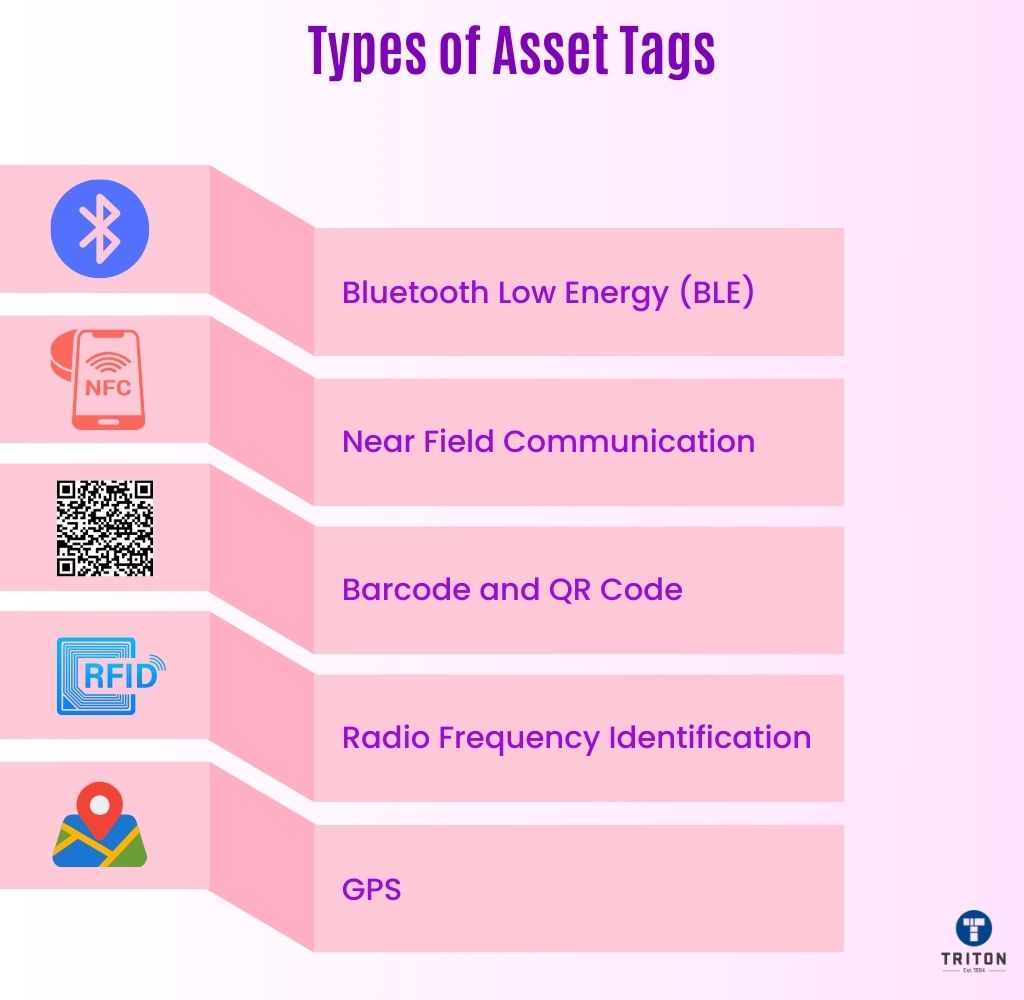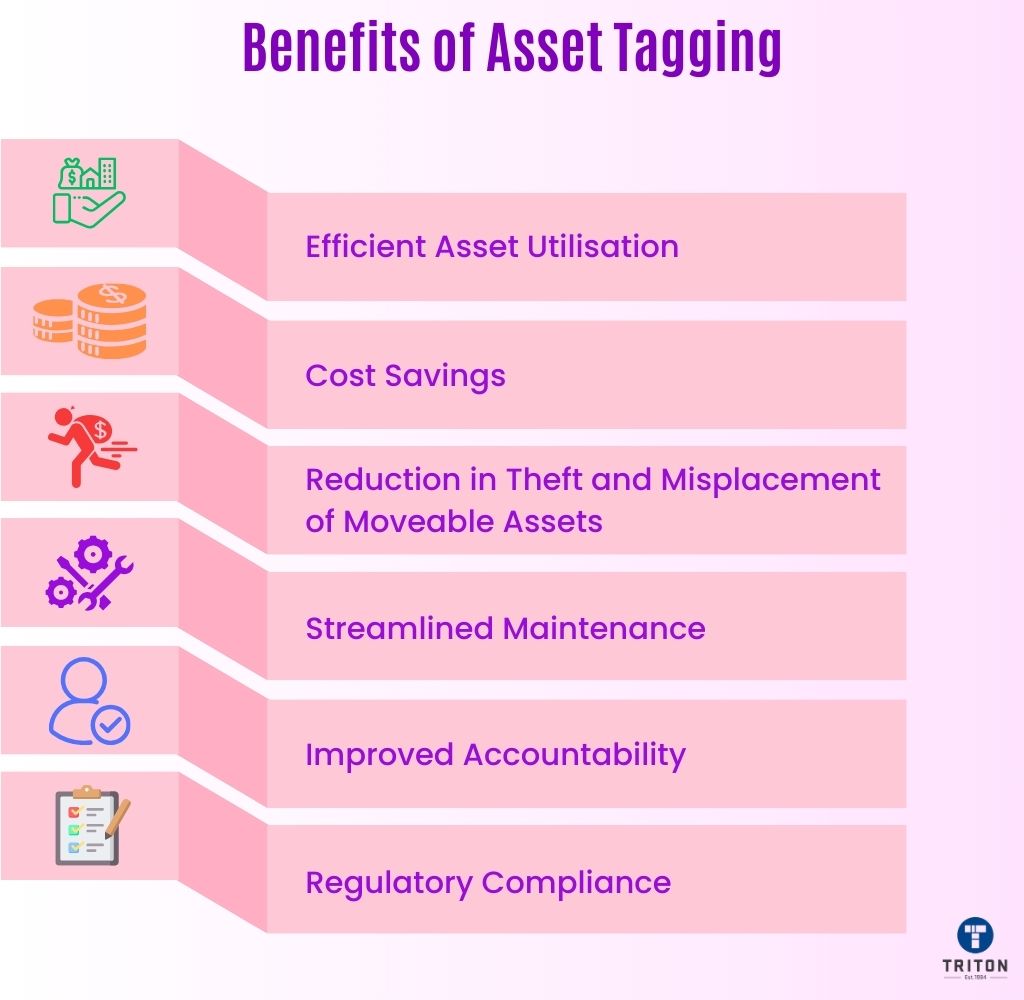
Asset tagging is the process of attaching identification tags or labels to assets for easy tracking and management. These tags, often barcodes or RFID tags, contain information about the asset, such as its type, location, and status. This system helps businesses monitor their assets’ condition and location, enhancing efficiency in asset utilisation and reducing loss or theft.
In this article, we’ll delve into the world of asset tags and explore their various types and functions. We’ll also answer some common questions about asset tagging so you’ll have all the information you need to get started.
So, let’s dive in and discover how asset tags can help your business succeed!
For centuries, artisans and merchants marked their goods, not just for branding but also to keep track of their inventory.
As businesses expanded during the Industrial Revolution, the need for organised inventory systems became paramount. Simple labels or engravings on products were no longer sufficient.
In the mid-20th century, the introduction of barcodes marked a significant leap. Initially used in supermarkets, these black-and-white striped patterns became instrumental for businesses to manage vast inventories efficiently. But technology didn’t stop there.
The dawn of the 21st century brought QR codes, RFID tags, Bluetooth Low Energy (BLE) Tags, NFC (Near Field Communication) Tags, UWB (Ultra-Wideband) Tags, etc., offering even more detailed tracking capabilities. These modern systems, combined with software solutions, have transformed asset management, making it more streamlined and precise than ever before.
Asset tagging is an essential process businesses must undertake to protect their assets from theft and loss. By assigning a unique identification number to each asset, employees can track and locate them easily, reducing the likelihood of misplacement or theft.
Asset tagging operations also help maintain accurate and up-to-date inventory records, which are critical for budgeting, financial reporting, auditing and accounting purposes. Moreover, it helps streamline maintenance and repair activities as businesses can easily identify equipment that needs servicing, reducing downtime and improving operational efficiency.
Overall, asset tagging is a crucial investment for any organisation looking to safeguard its assets, minimise losses and improve operational efficiency.

There are various types of asset tags, such as.
Let’s take a look at asset tag type one in detail.
BLE tags are energy-efficient, making them perfect for short-range indoor tracking. Commonly used in vast facilities, they’re detectable by devices like smartphones, merging convenience with functionality.
NFC tags excel in close proximity tracking. Beyond contactless payments, they’re invaluable for businesses needing quick asset verification due to their swift data exchange capabilities.
For precision tracking, UWB tags are the go-to. Used predominantly in industrial settings, they offer real-time location data with unparalleled accuracy.
The stalwarts of asset tagging, barcodes, and QR codes are cost-effective and versatile. They’re scanned visually and are ubiquitous in retail and warehousing.
Did you know barcodes and QR codes are two different technologies often lumped together? Check out our QR code vs. barcode guide to learn more.
RFID tags, using radio waves, allow for tracking without direct line-of-sight, making them ideal for scenarios where bulk assets are managed.
RFID tags are printed through special printers called RFID printers. Refer to our article on what is an RFID printer to learn more about RFID technology and its uses.
GPS tags provide real-time location data for assets on the move, especially over vast distances, crucial for industries like transportation and logistics.

Asset tagging has become an integral part of the realm of business for countless reasons. Here, we have highlighted some prominent ones.
Asset tags provide insights into how often and where physical assets are used. This asset data can help businesses make informed decisions, ensuring that resources are used efficiently and that assets are not duplicated or underutilised.
Asset tags help prevent buying something you already have. You can avoid unnecessary purchases by clearly recording what you own and its location. Over time, these savings add up, ensuring that businesses spend money only when truly needed.
Asset tags act as a deterrent for potential thieves. When items are clearly marked and tracked, they are harder to go missing. Plus, in the unfortunate event of theft, tagged assets can be more easily identified and potentially recovered.
Machines and equipment often need regular check-ups. Asset tags can be linked to maintenance history and schedules. This means businesses can easily track when an item was last serviced and when it’s due for its next check-up, ensuring everything remains in tip-top shape.
When items are checked out or used by staff, asset tags help track who had it last. This creates a sense of responsibility among employees, ensuring they handle company assets with care and return them after use.
Some industries have strict rules about tracking and maintaining assets. Asset tags make it easier to adhere to these regulations. By having a clear record of all assets, businesses can avoid potential fines and always comply with industry standards.
Assets that need to be tagged include tangible items of significant value with a lifespan beyond a year. Every company should ideally tag assets across all locations, including warehouses. This encompasses essentials like office computers, factory machinery, or company vehicles. Their high cost and pivotal role in operations necessitate their tracking.
However, it’s not just about expensive items. Smaller assets, like tablets in tech firms or medical devices in hospitals, also get tagged. This ensures efficient tracking and timely maintenance and prevents unauthorised use or misplacement.
Certain asset tags, like those made from anodised aluminium or polyester, are designed to resist extreme temperatures, moisture, and UV rays. This ensures they remain readable and intact even in challenging conditions.
The cost varies based on the type of asset tags, asset management processes, asset tracking software, asset tagging tools and the inventory size. While initial setup might require an investment, the long-term benefits of efficient asset management often outweigh the costs.
Many modern asset tags, especially those with QR codes or RFID technology, are designed to integrate seamlessly with various inventory and asset management software solutions. It’s advisable to check compatibility before implementation.
Check out our article on QR codes vs. RFID to learn the difference between the two popular technologies.
The choice depends on your business needs. Consider factors like the environment where assets are stored, the level of precision required in tracking, and your budget. For instance, BLE might be ideal if you need precise indoor tracking. For bulk tracking without direct scanning, RFID could be the answer.
Barcodes are ideal for businesses with a huge inventory. They’re simple to scan, cost-effective and efficient. They also prove to be valuable in cases where a business already has a barcode scanner system or is looking to implement one.
The downside? Visual scanning requires a direct line of sight, so if you need tracking without this limitation, barcodes might not be the best choice. If they are the right choice for your needs you can create barcodes and design asset tags in the on premise version in BarTender Software and the cloud version BarTender Cloud.
In conclusion, asset tagging is more than just tagging assets by placing labels on items. It’s a strategic approach to understanding, managing, and optimising a company’s valuable fixed assets.
Asset tags are pivotal in streamlining operations and enhancing accountability, from tracking inventory to ensuring timely maintenance. As businesses continue to evolve in a tech-driven world, the importance of an effective asset tracking system and management cannot be overstated.
Whether you’re a budding entrepreneur or an established business owner, embracing asset tagging is a step toward a more organised, efficient, and informed future.
Melbourne
Brisbane
Phone 1300 558 438
Live Chat – Widget below
Melbourne
Brisbane
Phone 1300 558 438
Live Chat – Widget below